Homemade Pasta Recipe
This easy homemade pasta recipe is so much fun to make! Only 2 ingredients. Silky-soft & so delish. Follow my step-by-step picture tutorial!
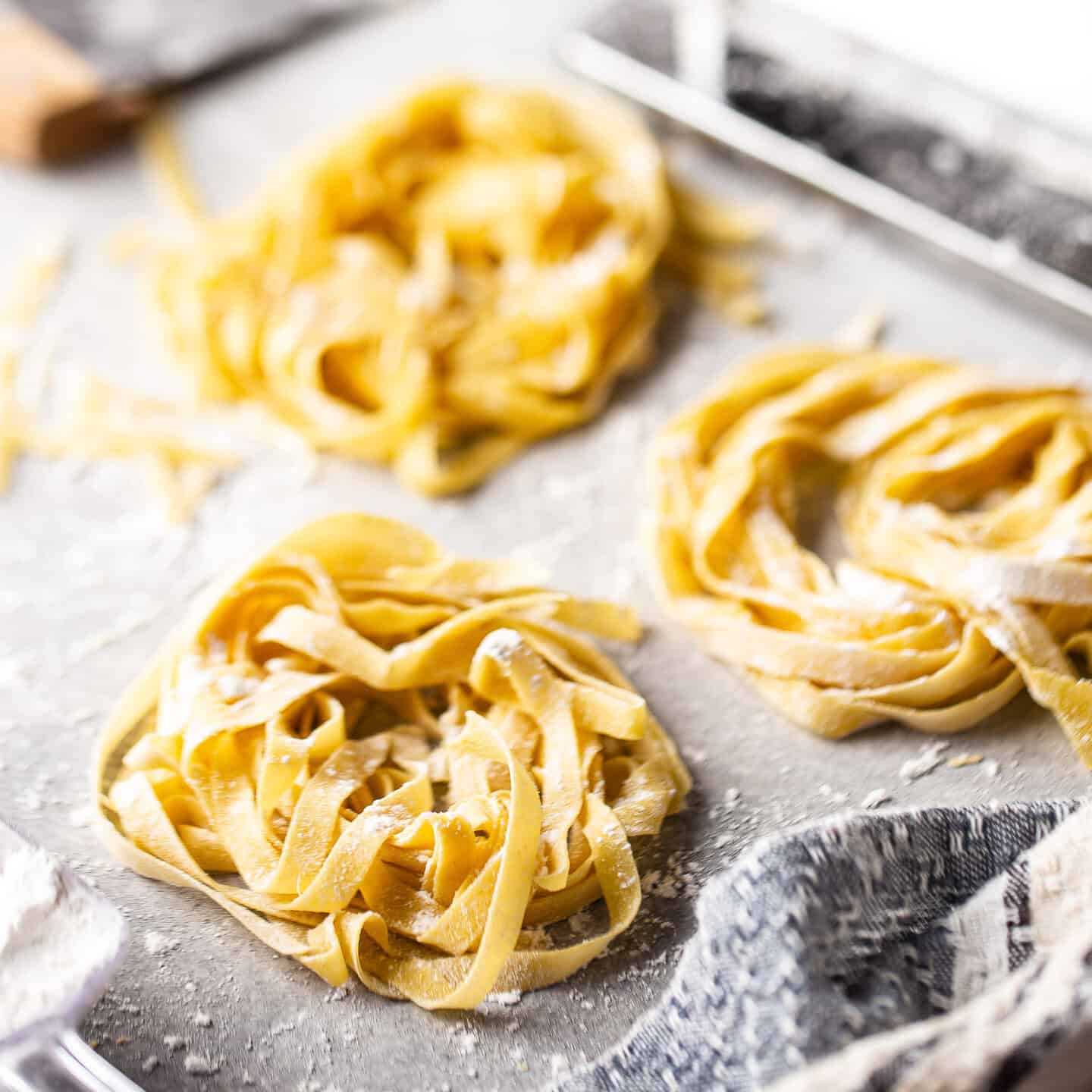
If you’ve never tried making homemade pasta, I strongly encourage you to give it a go!
It’s easy and so much fun, and the results are nothing short of transcendant. There is a delicacy to it that’s like nothing else.
This homemade pasta recipe is simple as can be with just 2 ingredients, it comes together in no time flat, and it’s so much fun working with the pasta machine. Make a fun afternoon activity in the kitchen out of it.
Especially if you have little ones! They love to turn the crank.
Italian recipes like this one are my specialty. Check out my Bolognese sauce, shrimp scampi, and 7-fishes cioppino recipes for lots more good ideas.
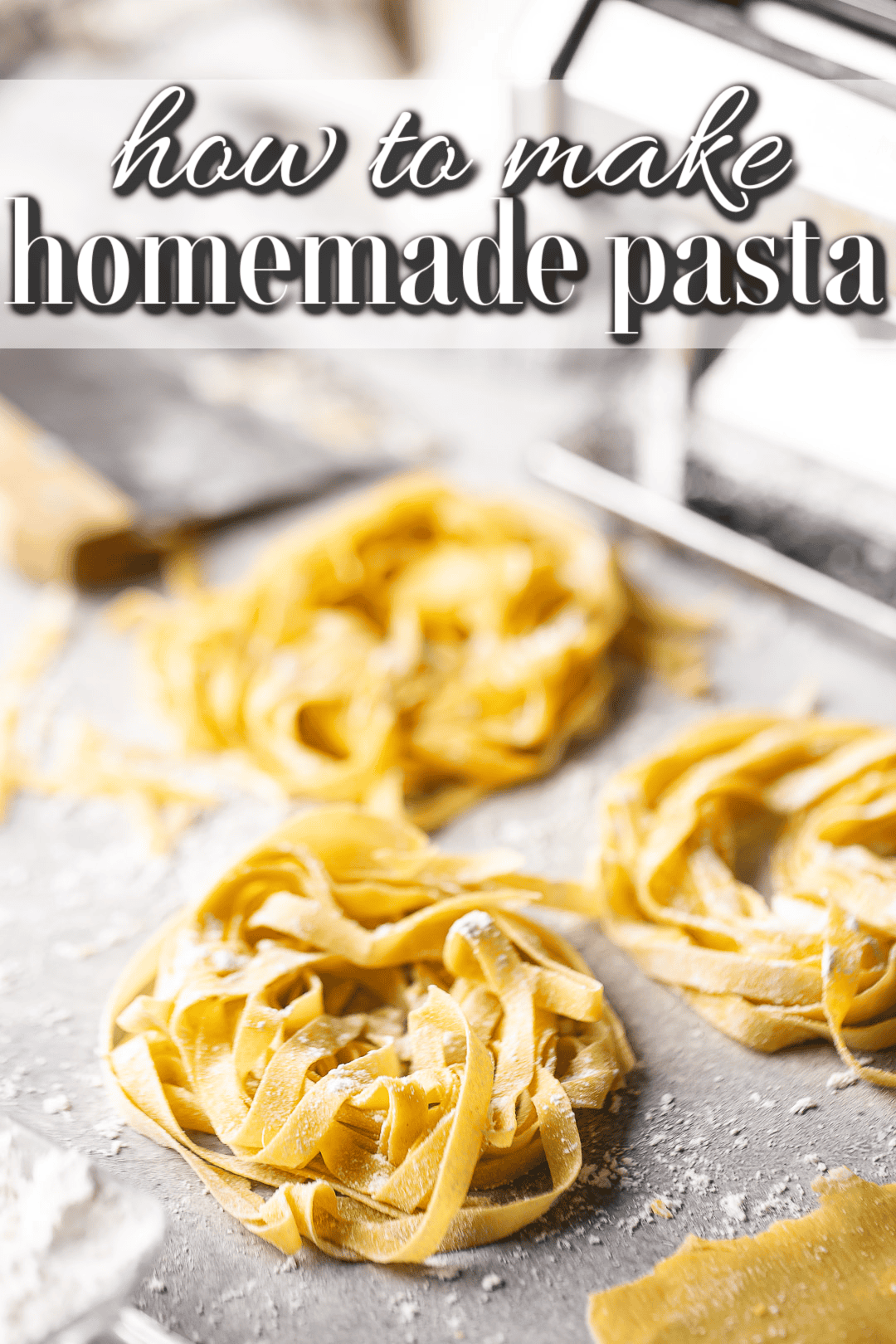
Table of Contents
- What is homemade pasta?
- Why this is the best homemade pasta recipe
- Ingredients
- Special equipment
- How to make homemade pasta
- How to serve homemade pasta
- Expert tips
- Frequently asked questions
- A few more of my best main dish recipes
What is homemade pasta?
Most of us are probably used to just buying a box of dried pasta for our pantries. But you can actually make your own!
It maybe sounds like a lot of unnecessary trouble, but the truth is it’s a whole experience.
Making it is such a fun process, and eating it is even better.
It’s so silky soft and tender in your mouth. It has a delicate feel that’s worlds apart from dried pasta.
And any time you make anything fresh the flavors are so much better. You already know that!
Why this is the best homemade pasta recipe
- Tastes amazing: The fresh flavors really come through, and the delicate texture will knock you off your feet!
- Few ingredients: You’ll only need 2 ingredients.
- Easy to make: Just mix up the dough, let it rest, then form it.
- Versatile: You can make sheets of pasta for lasagna, any sort of dumpling (such as ravioli, tortellini, or agnolotti), and any kind of noodle (spaghetti, linguine, tagliatelle, etc.) you like with this recipe.
Ingredients

Flour: In the past I’ve used a 1:1 combination of semolina and all-purpose flour, but for what you see here I used 100% all-purpose flour and it was spectacular. You can also buy the fancy 00 (aka: doppel-zero) flour, which is what so many Italian cooks swear by. I have not tried making homemade pasta with a gluten-free flour blend, but if you have I’d love to hear about your experience! Drop me a line in the comments section below.
Eggs: Large chicken eggs, preferably at room temperature (although I don’t find this to be critical) or a plant-based product that subs 1:1.
Special equipment
- Measuring cups: Follow my guide on how to measure ingredients.
- Clean surface: On which to knead the dough.
- Fork: For beating the eggs.
- Pastry scraper: Optional, but it’s great for bringing the dough together and cleaning the worksurface.
- Pasta machine: Rolls the pasta to an impossible thinness, and cuts it into noodles or other shapes.
How to make homemade pasta
This easy recipe comes together in 5 simple steps.
Step 1: Make a well
Start by tipping the flour out onto your clean worksurface.
Make a well in the center, and crack in the eggs.
Step 2: Work in eggs
Beat the eggs with a fork, gradually bringing flour from the sides of the well into them.
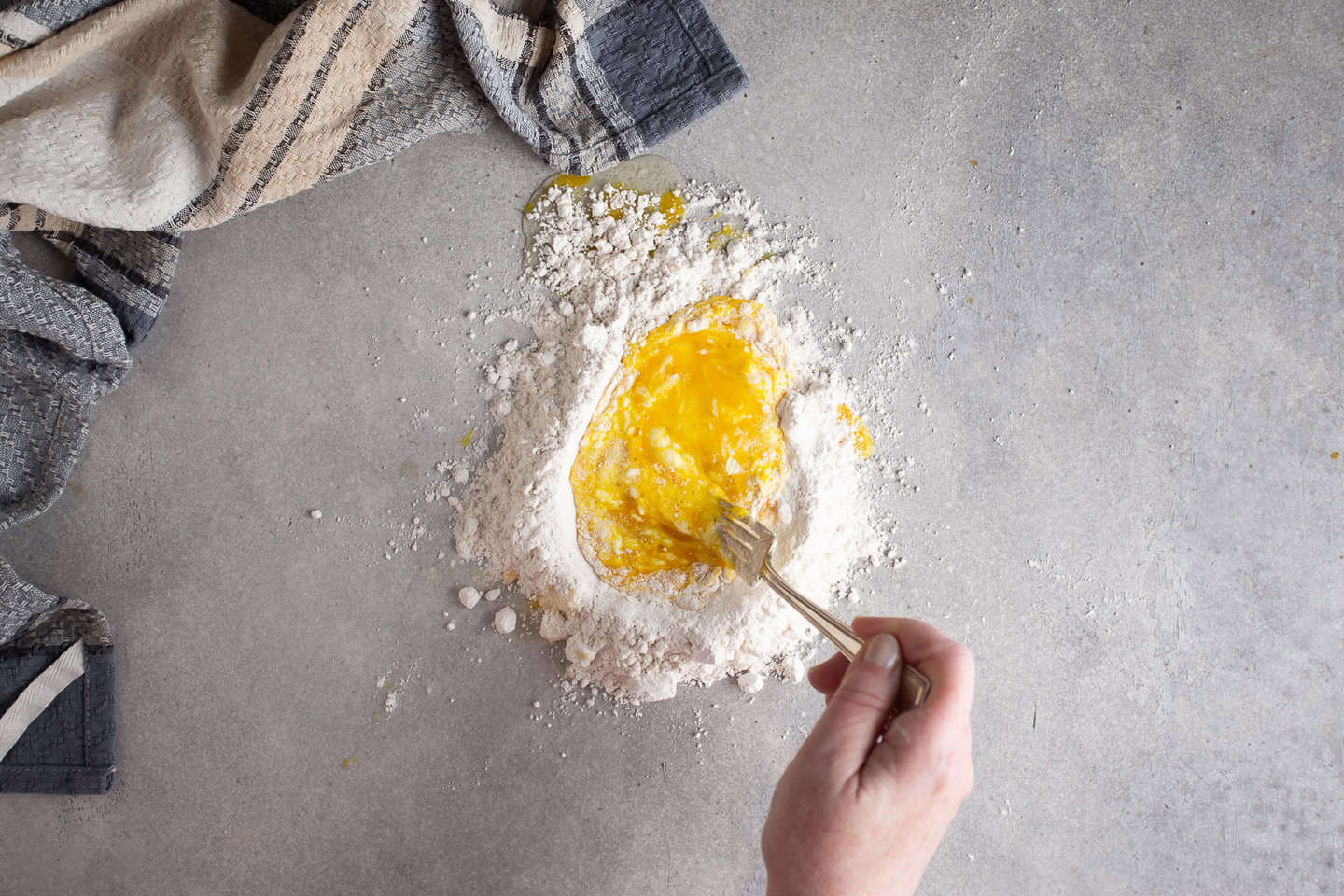
As you continue to bring flour into the eggs, the mixture will become stiffer. As this happens you may want to switch from the fork to the pastry scraper or your clean hands, folding the mixture in on itself and kneading it.
Once all the flour has been incorporated, you should have a stiff ball of dough.
Step 3: Rest
Cover the dough ball with a bowl to keep it from drying out, and allow it to rest for 1 hour.
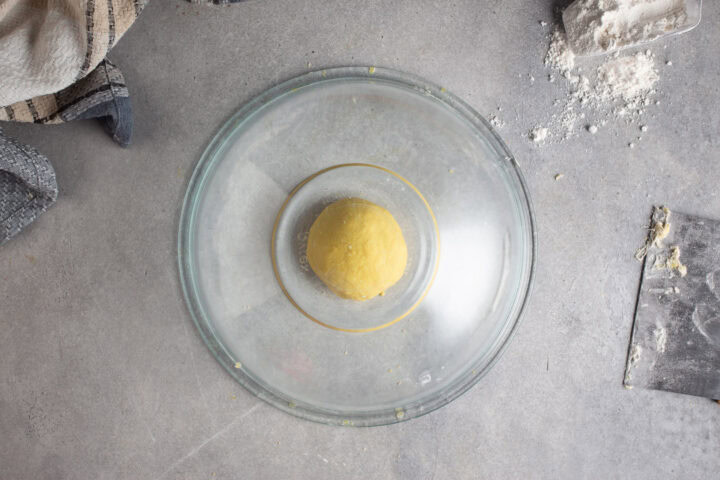
This resting period will allow the dough to fully hydrate so it’s easier to work with.
Step 4: Roll
Divide the dough into halves, then quarters, then eighths.
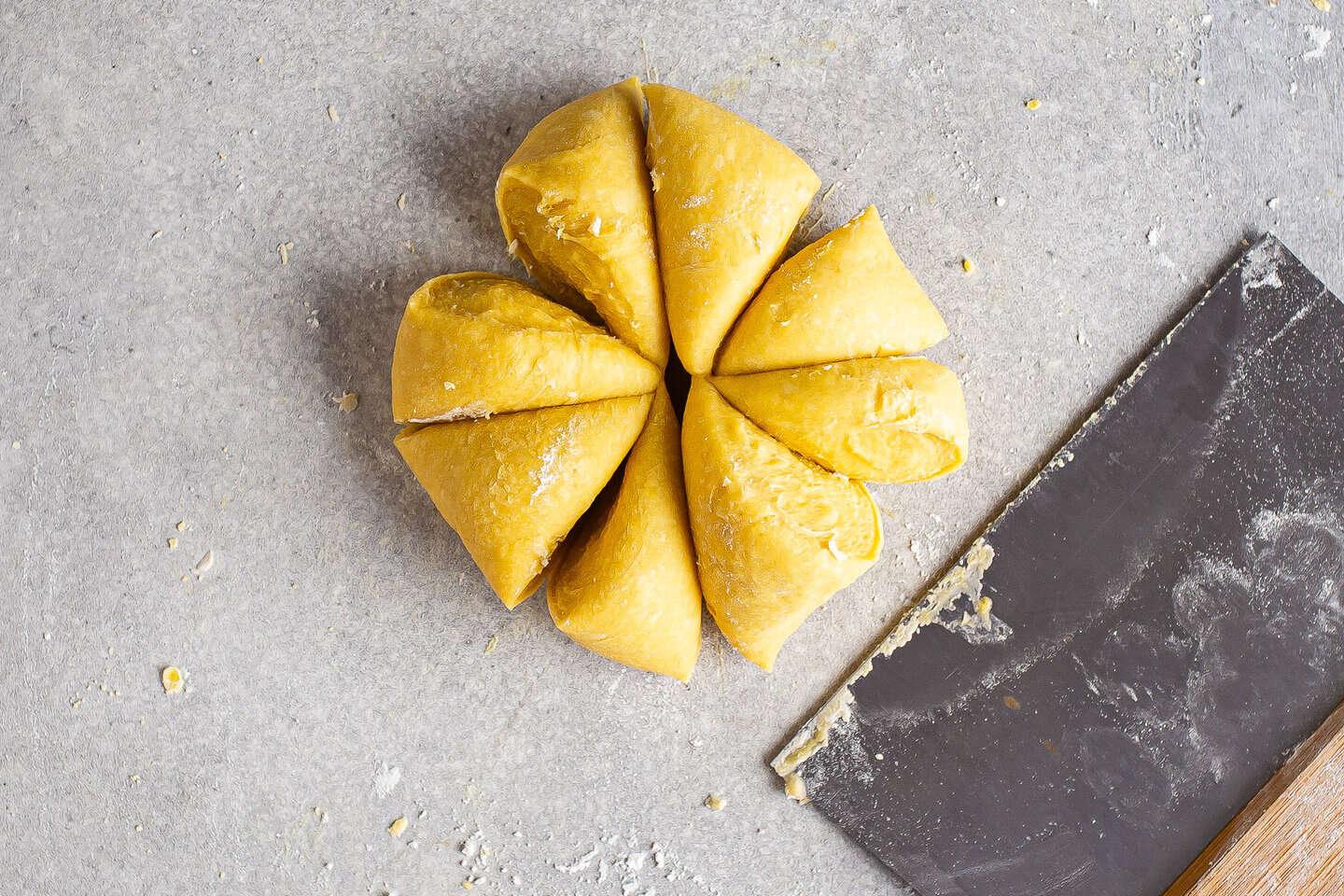
Pull off one eighth portion and re-cover the rest.
Dust it liberally with flour and flatten it into a rectangular shape with your fingers.
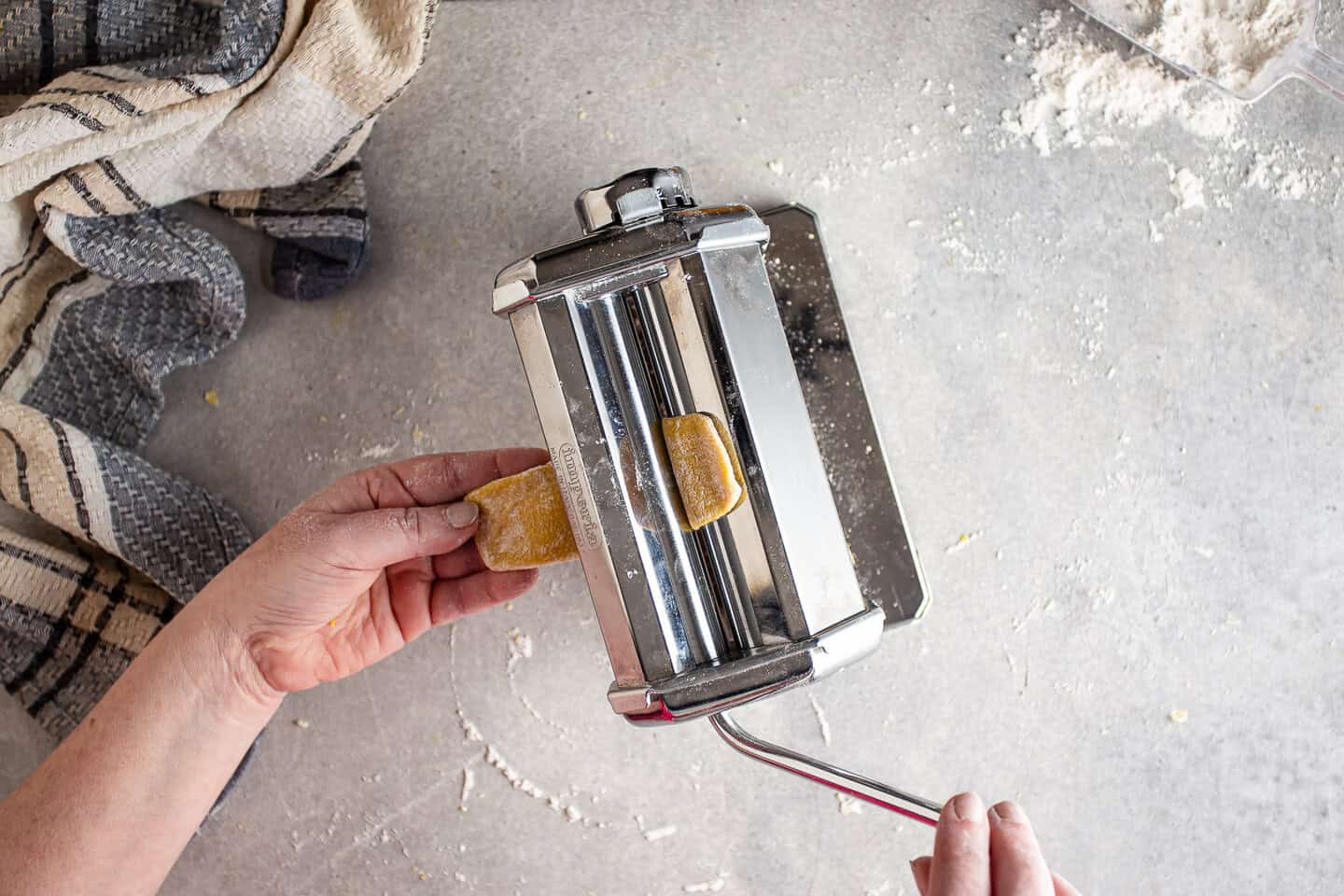
Then, with the machine set to the thickest setting (on mine this is “1”) place it between the rollers with one hand while turning the crank with the other.
It will flatten the dough to a perfect even thickness.
Turn the machine to the next setting and repeat. You will continue doing this until you reach the thinnest setting (on my machine this is “6).
Keep doing this until all the dough portions have been formed into thin sheets. Dust them with flour to prevent them from sticking together or sticking to the worksurface.
At this point you can cut it into noodles or make dumplings.
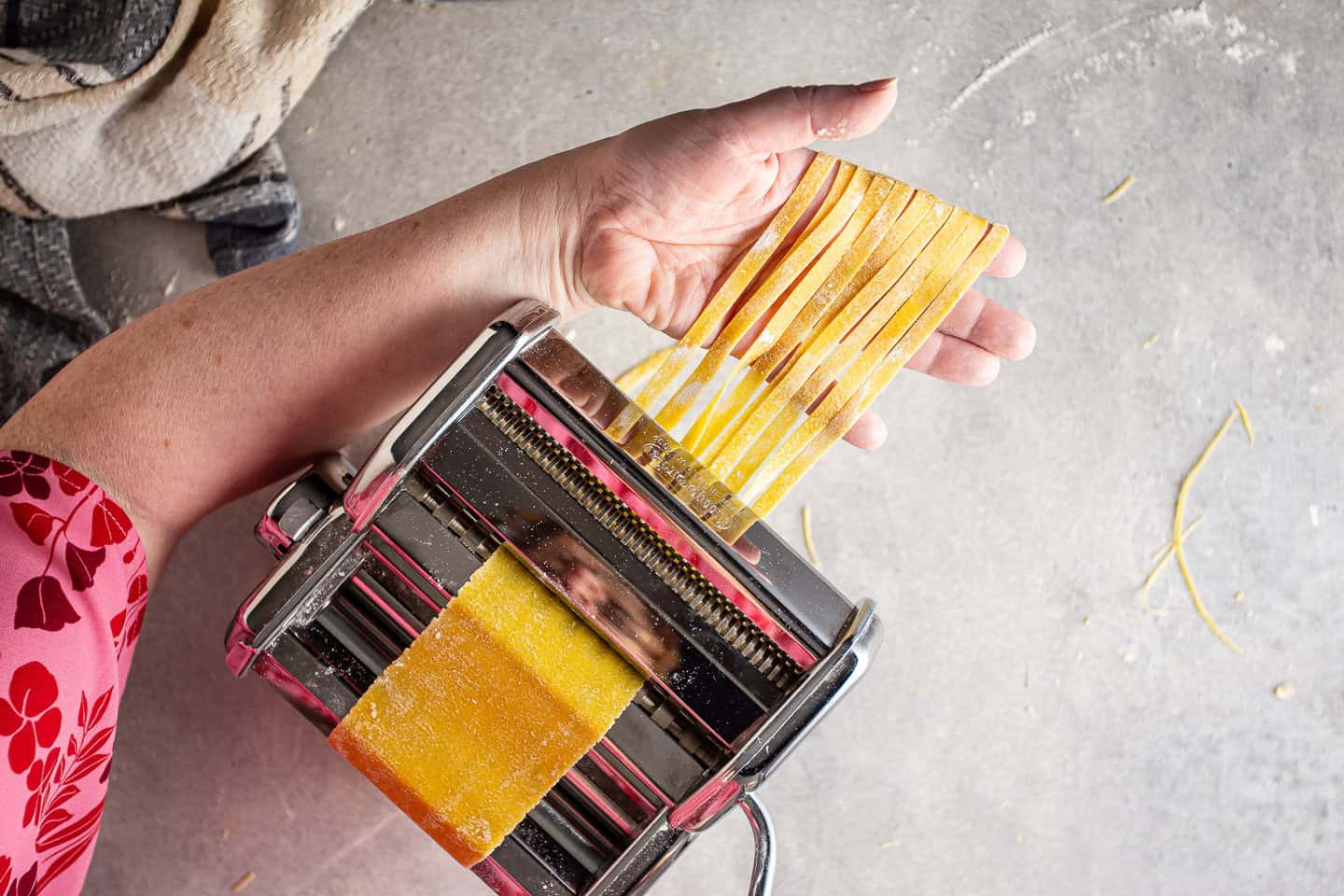
My machine has a cutting attachment that makes perfect spaghetti or tagliatelle. Here you can see me running the sheets through it to create beautiful ribbons.
Step 5: Boil or dry
I really love to cook my homemade pasta right up while it’s still fresh.
Bring a large pot of generously salted water to a boil and drop in the pasta. It will be fully cooked in around 1 to 2 minutes.
(Unlike dried pasta, fresh pasta cooks very quickly! This is because it’s already full of moisture.)
You can also dry the pasta. Make sure it’s well-dusted with flour to prevent sticking, and leave it out at room temperature for a day or so. Either drape it over a hanger (like a dowel rod suspended between two chairs) or place it on clean, flour-dusted kitchen towels on a tabletop or ironing board, turning as needed to get air on all sides.
All the moisture will evaporate out of it and it will become very brittle, so treat it gently!
How to serve homemade pasta
This fresh pasta recipe can be used in all sorts of different ways.
Keep it in long sheets and make lasagna, cannelloni, or rotoli. Or drop small spoonfuls of filling on, sandwich another sheet on top, press out the air, and cut it into dumplings like ravioli or agnolotti. You could even twist them into tortellini! Or cut them into long strands, spaghetti-style.
As for sauces, I prefer a lighter, thinner sauce for fresh pasta. This way you won’t overwhelm the delicate texture. I’d suggest my go-to tomato sauce, piccata, or basil pesto recipe. A creamy sauce would also be really nice, as would just butter and parm or olive oil and fresh garlic!
Warm the sauce in a large pot, then drain the pasta when it’s just shy of fully cooked. Add the drained pasta to the sauce and toss them together, finishing the cooking process in the sauce, so the pasta can absorb some of those flavors.
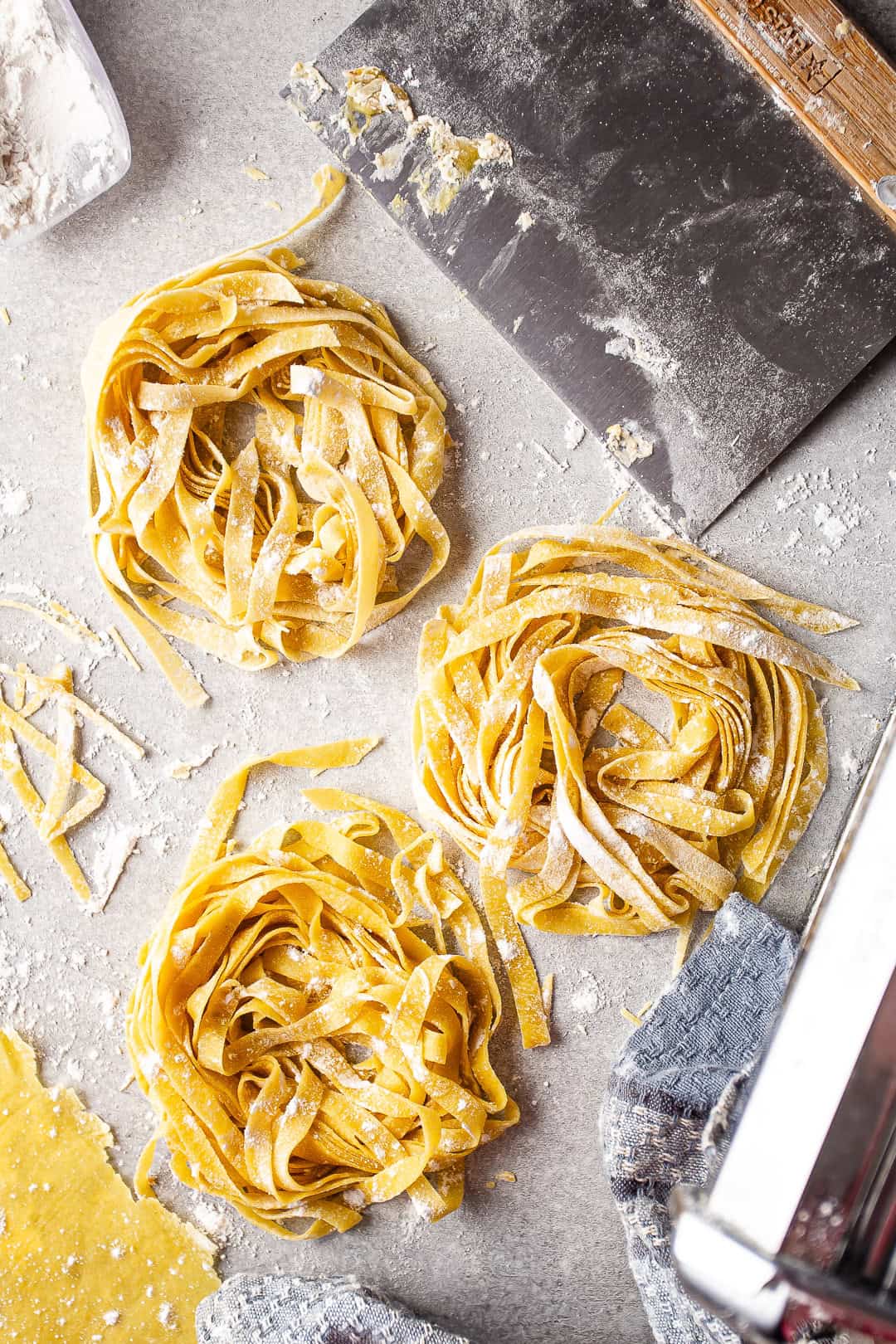
Expert tips
Flour is your friend: Be sure to have extra flour on hand, to keep the dough from becoming too sticky. If the dough sticks to the rollers, it will be a very frustrating experience for you! Dust the dough liberally and frequently to avoid this.
Fold as needed: If your pasta sheets are too long and skinny, try folding them into thirds every so often and running them back through the rollers wide side first. This will help to form them into wider, more rectangular sheets.
Get it as thin as you can: That last setting on the pasta maker may seem like it’s way too thin, but trust me! It’s worth doing. As the pasta cooks it becomes thicker, so it’s best to get it as this as possible. That texture of thin, delicate fresh pasta is so incredible!
Dress it lightly: Because fresh pasta is so delicate, you don’t want to overwhelm it with too much heavy sauce. Start with a small amount, toss the pasta in, and then you can add more if needed.
Frequently asked questions
Making fresh pasta is not an exact science!
Despite the label on the carton, all eggs are not exactly the same size, and the humidity levels in your kitchen on any given day can also have an impact.
Aim for a pasta dough that’s firm and not too sticky. Knead in more flour if needed to achieve this.
And if your pasta rollers are tearing the dough, it just needs to be dusted with flour again.
They are affordable and easy to buy! Click this affiliate sales link if you’d like to purchase one: Pasta Maker.
Or you can try rolling it out with a rolling pin, but it will be tricky to get it thin enough. Hopefully you’ve got good upper body strength (and patience!).
If you have a machine but it didn’t come with a cutter attachment, a kitchen knife will do the job just as well.
You can make and dry your own pasta, then keep it at room temperature for up to 6 months. For instructions, scroll back up to Step 5 under the heading “How to make homemade pasta.”
Fresh pasta will also keep in the fridge for 2 days, or in the freezer for 8 months. It should be thawed overnight in the fridge before cooking.
This homemade pasta recipe makes enough to serve 4 people.
The nutritional info in the recipe card below is for 1/4th of the batch. It is for the fresh pasta only. It does not include sauce.
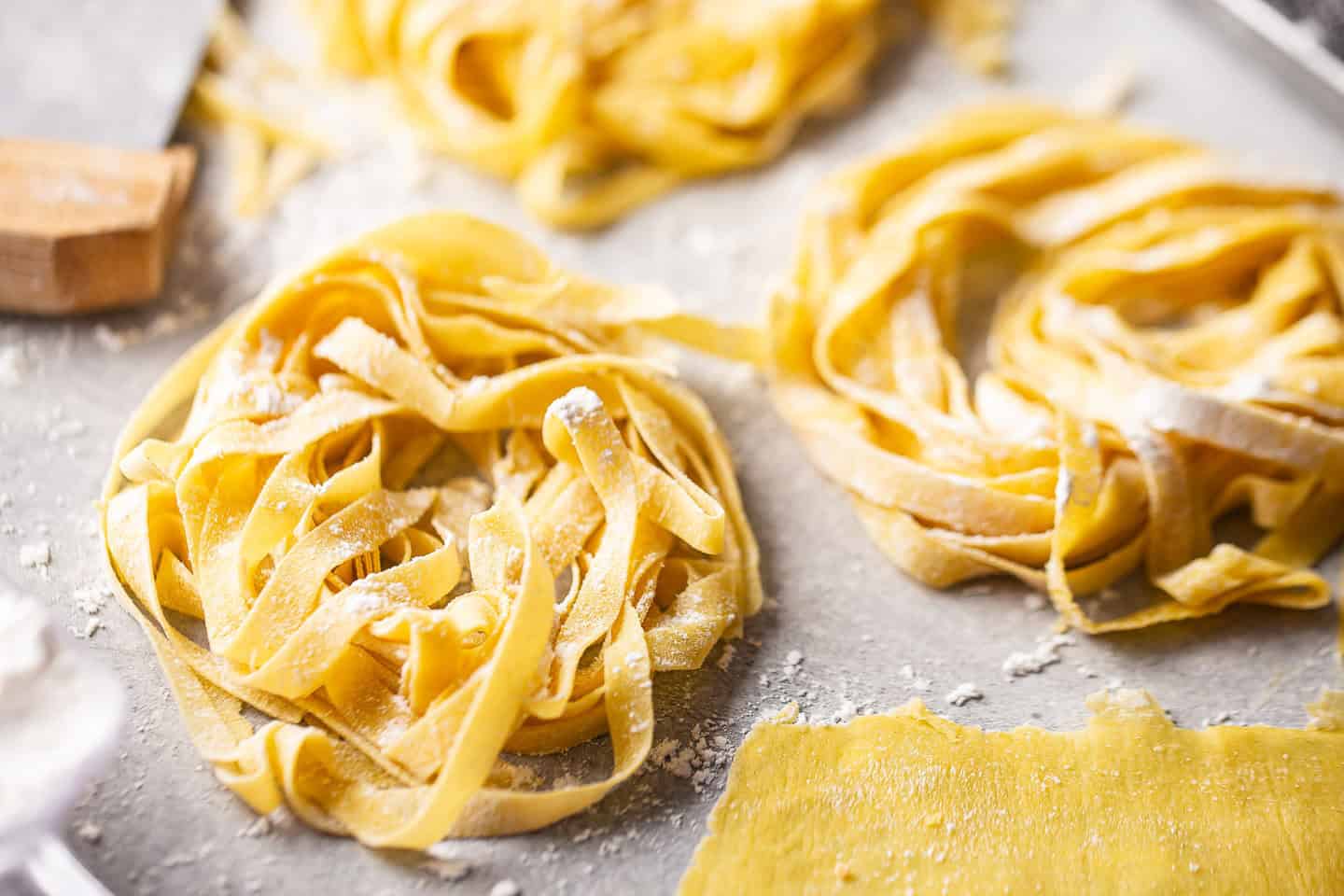
A few more of my best main dish recipes
As an amazon associate I earn from qualifying purchases.

Easy Homemade Pasta Recipe
Ingredients
- 1 cup (125 g) flour, (all-purpose, semolina, or 00 flour) plus extra for dusting
- 2 (88 g) eggs, large
Instructions
- Tip the flour onto a clean work surface and make a well in the center.
- Crack the eggs into the well and beat them with a fork, gradually drawing more and more flour into the mixture from the sides of the well.
- When the dough becomes too stiff to continue combining with a fork, switch to a pastry scraper or clean hands to fold the mixture in on itself and knead it together and into a stiff dough.
- Cover the dough ball with a bowl and allow it to rest for one hour.
- Divide the dough into 8 equal portions.
- Dust a portion of dough with flour and run it through the pasta maker on the widest setting.
- Continue rolling the pasta dough through the rollers, gradually decreasing the thickness until you reach the thinnest setting.
- Dust the pasta sheets with flour to prevent sticking.
- Cut the sheets into long noodles, if desired.
- Cook the pasta in boiling salt water for 1 to 2 minutes, and dress with sauce as desired.








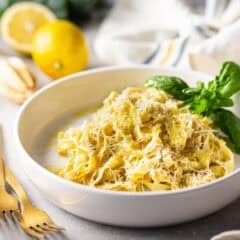


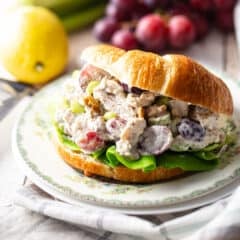
This looks so fun – thank you! How much do you knead the dough before letting it rest?
Just until it comes together Helen! Hope you give it a try and enjoy!